See how data is being used to address humanitarian issues around the world

Collaboration in the cloud is definitely the next big thing from my perspective for life sciences organisations.
See how data is being used to address humanitarian issues around the world

Collaboration in the cloud is definitely the next big thing from my perspective for life sciences organisations.

If you want to hear more about Responsible AI, join the virtual conference “Artificial Intelligence & The Ethics Mandate” on March 16th at 11:00 am CET.

My career path has taken me from the fields on my family farm to the boardrooms of organizations around the world. Starting when I was six years old, my summers involved working with my cousins on the farm from dawn until dusk. From a very early age, I learned the
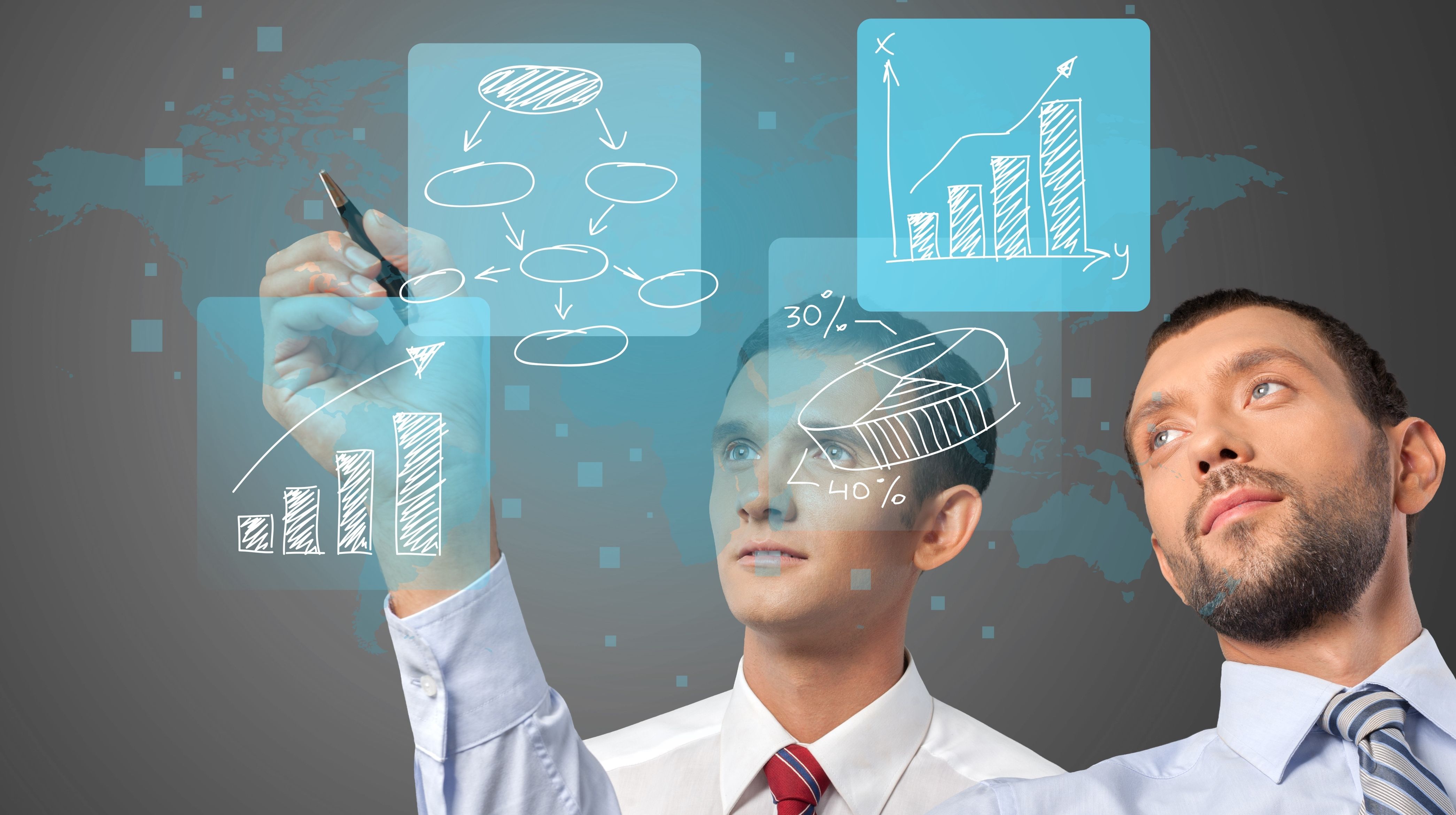
Generalmente hablamos de cómo los sectores económicos, las industrias y las empresas pueden aprovechar uno de los principales activos con los que cuentan en la actualidad -como son los datos- para proyectar diferentes escenarios, tomar mejores decisiones y ser cada vez más competitivas e innovadoras. También hay que hablar de

“Si 2020 fue el año de Covid-19, 2021 será el de las vacunas”. Así lo planteó Greg Horne, Global Principal, Healthcare de SAS, cuando se completó el análisis de las Tendencias para ver con analítica en 2021. En el mismo, Greg planteaba algunas preguntas puntuales sobre cómo la analítica avanzada puede ayudar al
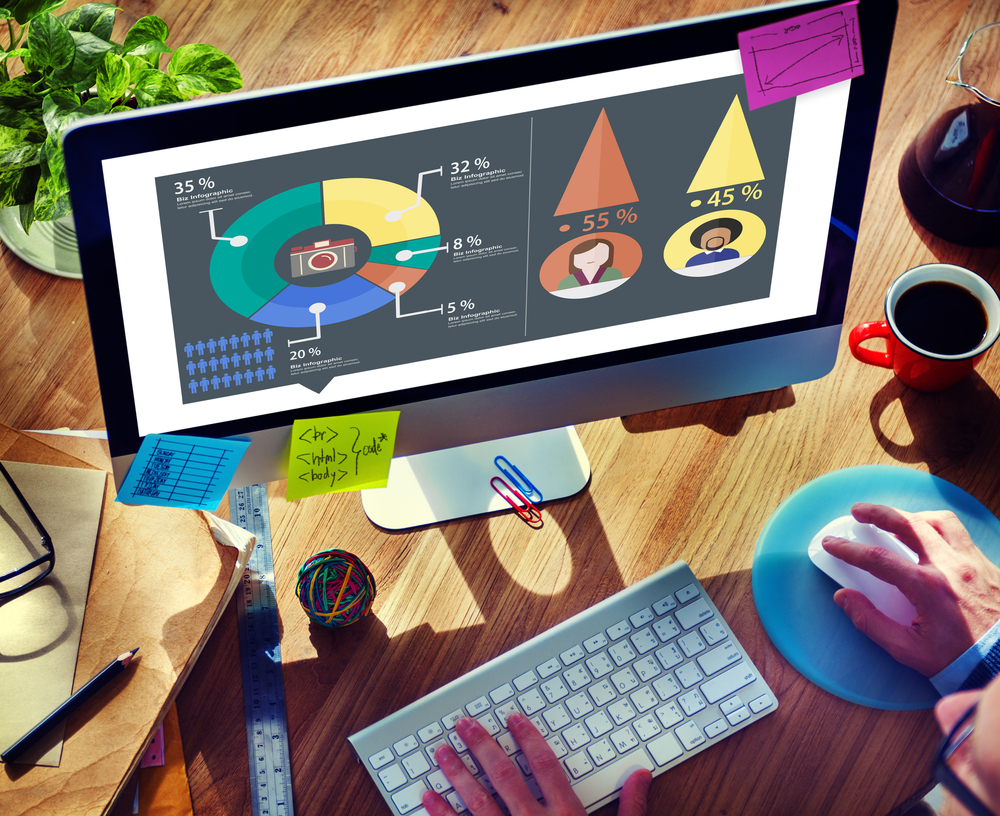
Lo vivido en el último tiempo ha significado tiempos de incertidumbre para muchos y unos de ellos son los profesionales de marketing en las empresas. No era para menos: los comportamientos de los clientes (B2C y también B2B) cambiaron abruptamente: valores, lugares, canales, frecuencias… todo lo que conocíamos anteriormente y

In conversation with Sophie Achermann, co-founder of the platform www.StophateSpeech.ch.
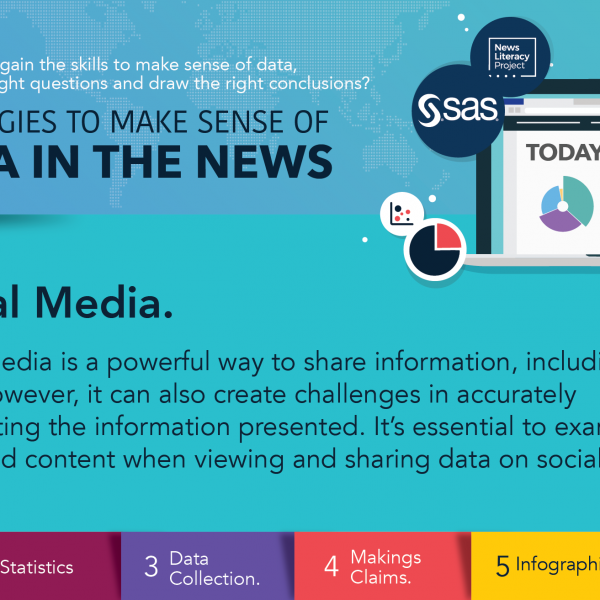
Editor's note: This blog post is part of a series of posts, originally published here by our partner News Literacy Project, exploring the role of data in understanding our world. Like infographics, social media and other forms of user-generated content pose unique challenges regarding data. Many news outlets and journalists have checks and balances

From mental health to biodiversity, SAS is committed to using data for social innovation, committing our resources, analytics expertise and software to tackle global issues. It's a vital undertaking, and we can't do it alone -- strategic partnerships are key to these efforts. Here's a quick overview of our top
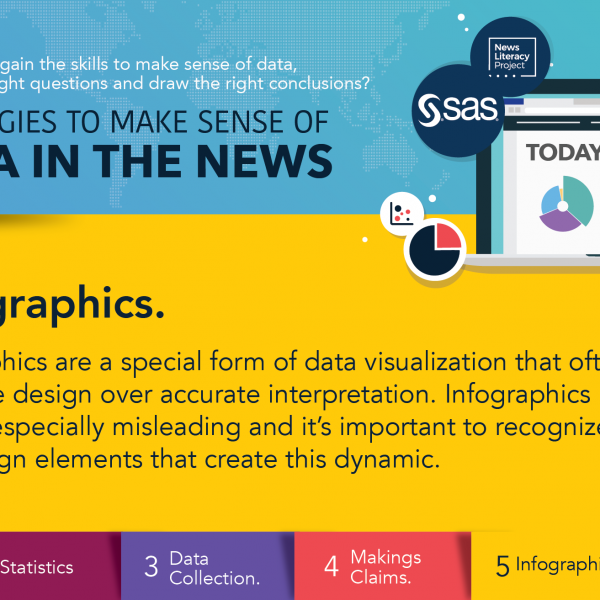
Editor's note: This blog post is part of a series of posts, originally published here by our partner News Literacy Project, exploring the role of data in understanding our world. Infographics are one of the most visual ways to tell stories with data. They are designed to catch the reader’s eye, and they use
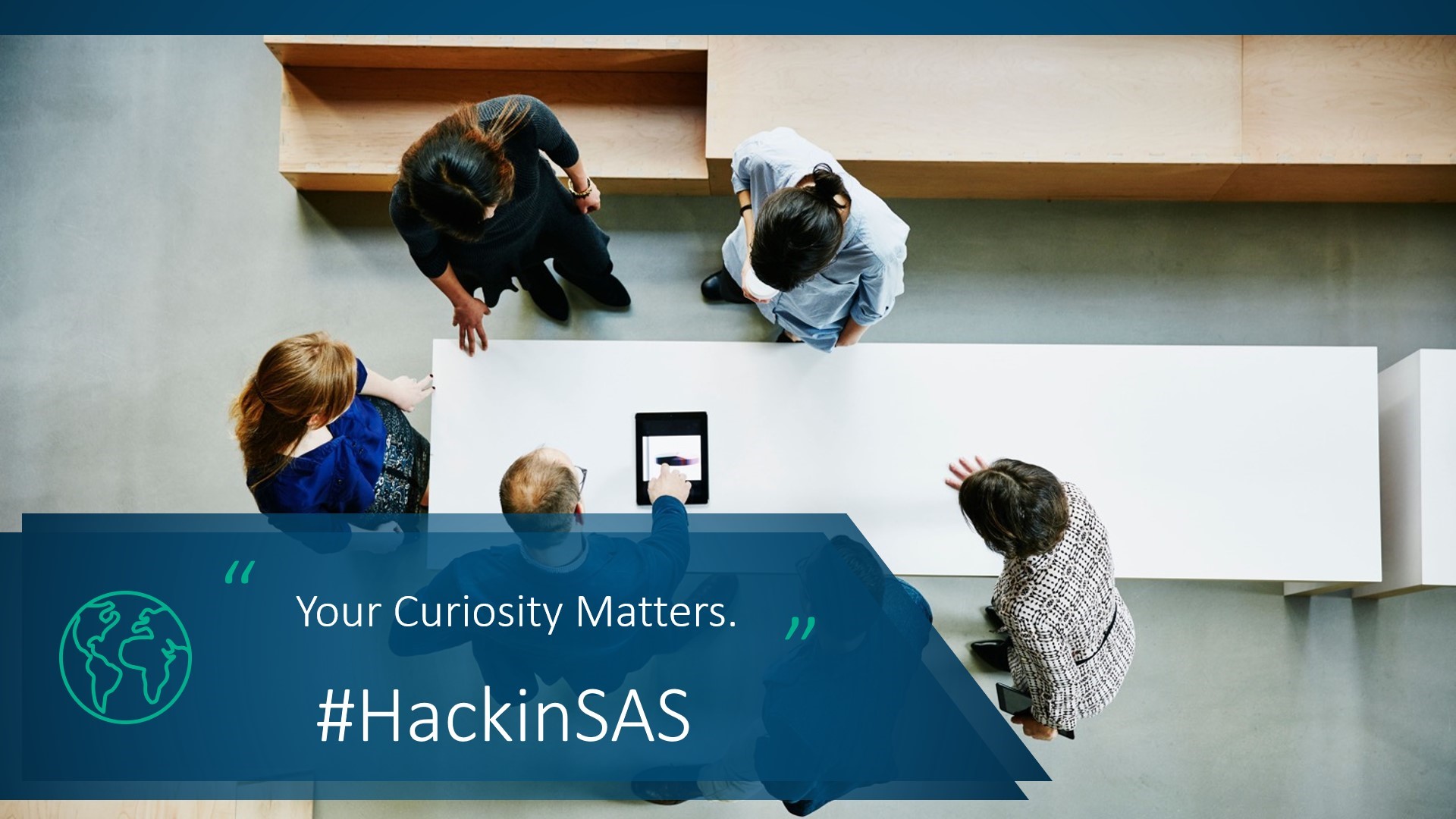
CTOからのあなたへの招待状 ~リアルワールドのためのグローバルデータサイエンス・ハッカソンイベントを開催~ 世界中のどこかにいる有志のあなたへ 従来からSASをご愛顧頂いている皆様、そして、これから新たに出会う皆様、こちらはSAS Instituteでございます。今回は、非常にInspired+Greatなニュースをお届けさせていただきます。 それは、SASがグローバルでHackinSASというデータサイエンス・ハッカソンイベントを開催するということです! 今回のイベントでは、グローバルで参加者を募集しています。もちろん、従来のSASユーザのみならず、開発者やオープンソースユーザ、学生の方々、Startup企業の方々、またはテクニカルパートナーの方々、誰でも参加可能なイベントです。また、今回イベントの主旨としては、皆様の周りにあるデータを用いて、そのデータから有用な情報を得て、リアルワールドのビジネス課題・社会問題を解決するためのソリューションや、よりクリエイティブなデータの使い道を発見することを目指しています。詳細は後述するイベント詳細情報をご参照ください。 SASは長年、データから有用な情報を得て、その情報をリアルワールドの社会問題・環境問題、そしてビジネス課題解決に貢献できる製品やソリューション、そしてサービスを開発し、そのナレッジを貯蓄してきました。また、たくさんのユーザの方々との関わり合いの中で得られた情報などもとても有益なものでした。ハッカソンイベントはまさに、そのような様々なナレッジや発想を持っている皆様に切磋琢磨できる舞台を提供しています。 まずSASのエグゼクティブ・バイス・プレジデント兼最高執行責任者兼最高技術責任者のOliver Schabenbergerからのメッセージをご覧ください。 クリック! では、イベント詳細情報は下記となります。 1.開催スケジュール ハッカソン全期間スケジュール 2020年12月17日-2021年2月15日 チームとテーマの登録期間。 この期間中に、あなたのチームを結成しましょう。そして、課題を定義し、サマリをご提出ください。 2021年1月―2月 リソース確保期間。 この期間中に、ハッカソンをするための無料イネーブルメントリソースを活用して、優位に立ちましょう。 2021年3月 ハッカソン正式開始期間。 この期間中に、あなたとチームメンバーの創造性を輝かせる時がきます。データとSASを使って課題を解決しましょう。 2021年4月 最終ラウンド期間。 最終ラウンドに参加できるチームが選定され、SAS Vector Labsチーム(SAS Innovation Hub)に紹介され、更なる課題解決のためのアプリケーション開発を行うことが可能です。 Virtual SAS® Global Forum 2021(2021年春に開催予定) 2021年のSAS Global Forumで優勝者の結果が公開されます! 事前ライブキックオフミーティング 2021年1月13日13:00 – 14:00オンラインで開催 開催概要: SASのエグゼクティブ・バイス・プレジデント兼最高執行責任者兼最高技術責任者のOliver Schabenbergerが、この他に類を見ないグローバルハッカソンとは何か、そしてビジネスの課題解決や社会貢献のためにアナリティクス、AI、オープンソースをどのように創造的な方法で活用できるのかについてお話します。 ハッカソンズ・インターナショナルのCEOであるAngela Bee ChanとSASのプロダクト・マーケティング・マネージャーであるMarinela Profiの魅力的な対談が行われます。彼らはこのハッカソンの中でできるコラボレーションと、HackinSASが単なる競争以上の価値あるものであるかをお話します。

A good public transportation system is crucial to develop smart cities, particularly in great metropolitan areas. Network optimization algorithms can be applied to better understand urban mobility, particularly based on a multimodal public transportation network.

Tis the season for my annual, fun Christmas themed blog post! This is the seventh year and my tenth song. I hope you enjoy this 2020 holiday song (to the tune of Rockin' around the Christmas Tree). Hackin around the Decision Tree at the SAS party hackathon Data science algorithms

Editor's note: This blog post is part of a series of posts, originally published here by our partner News Literacy Project, exploring the role of data in understanding our world. Every day people use data to better understand the world. This helps them make decisions and measure impacts. But how do we take raw
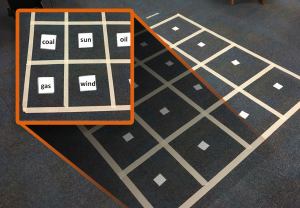
Some people hear the words computer science and only think of coding but ask any computer scientist and they would tell you that coding is just a tool to solve important and interesting problems. At its core, computer science is about using technology to solve complex problems in the world,
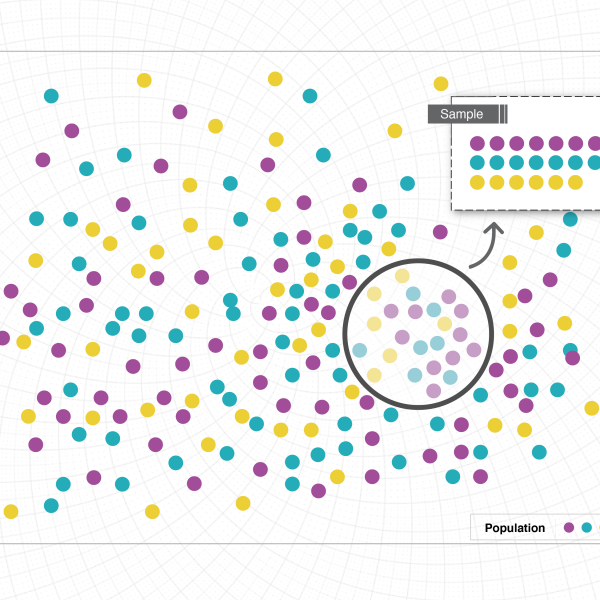
Editor's note: This blog post is part of a series of posts, originally published here by our partner News Literacy Project, exploring the role of data in understanding our world. As discussed in previous posts, statistics and visual representations of data can be misleading. But what happens when the data itself is misleading? And if data is
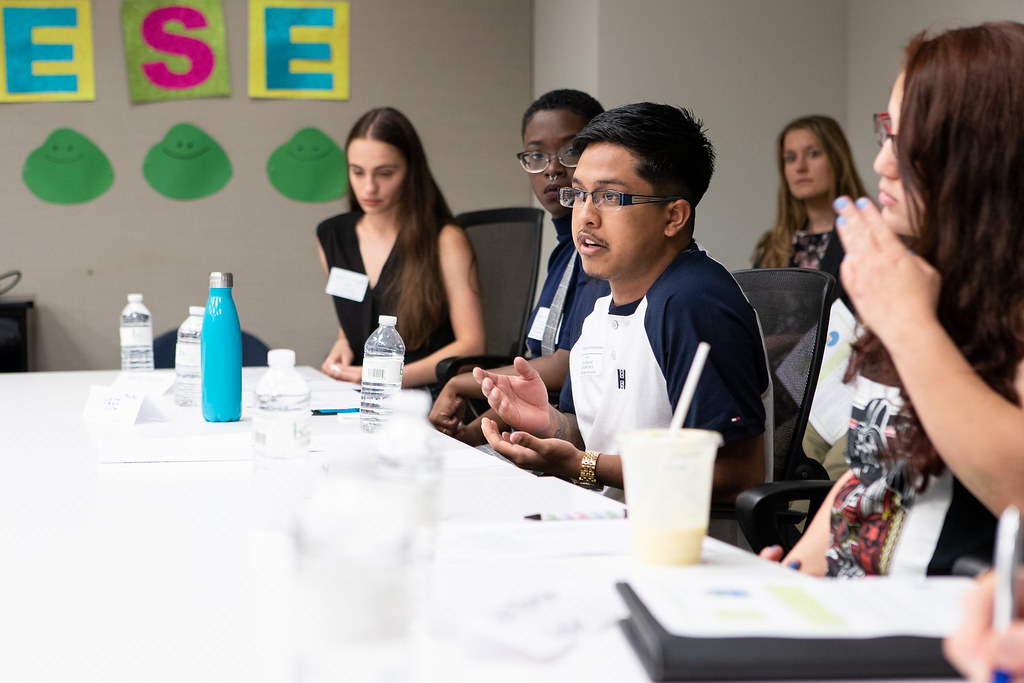
What comes to mind when you think of a “homeless person”? Chances are, you’ll picture an adult, probably male, dirty, likely with some health conditions, including a mental illness. Few of us would immediately recall homeless individuals as family members, neighbors, co-workers and other loved ones. Fewer still are likely aware of how many youths (both minors and young adults) experience homelessness annually. Homeless youth is a population who can

It’s no surprise that nonprofit organizations providing health-related services are overconsumed during the COVID-19 pandemic, but what about other types of nonprofits? According to CNM President and CEO, Tina Weinfurther, the pandemic has affected nonprofits in different ways. Some are running on fumes, while others have doubled in size and

Most New Yorkers like to fantasize about owning and living in a classic New York City brownstone, complete with high ceilings, large windows and a front stoop. You can picture yourself sitting there alongside the iron railing with a cup of coffee while you watch the city wake up and
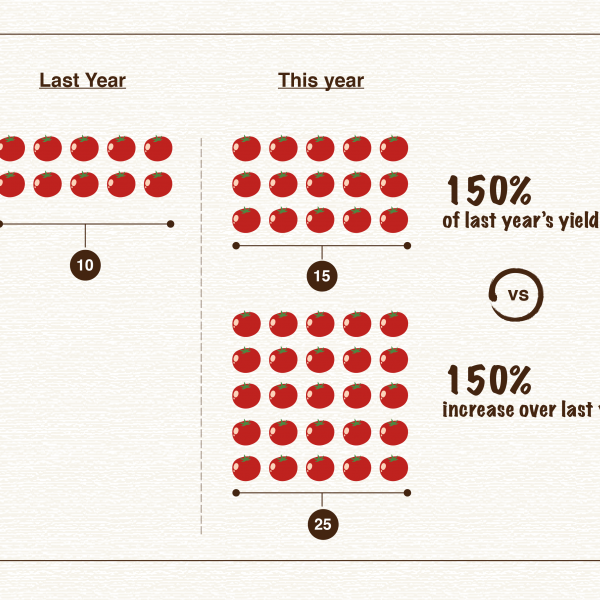
Editor's note: This blog post is part of a series of posts, originally published here by our partner News Literacy Project, exploring the role of data in understanding our world. “Numbers don’t lie” is a phrase we often hear to support the idea that something must be true if you can cite data or
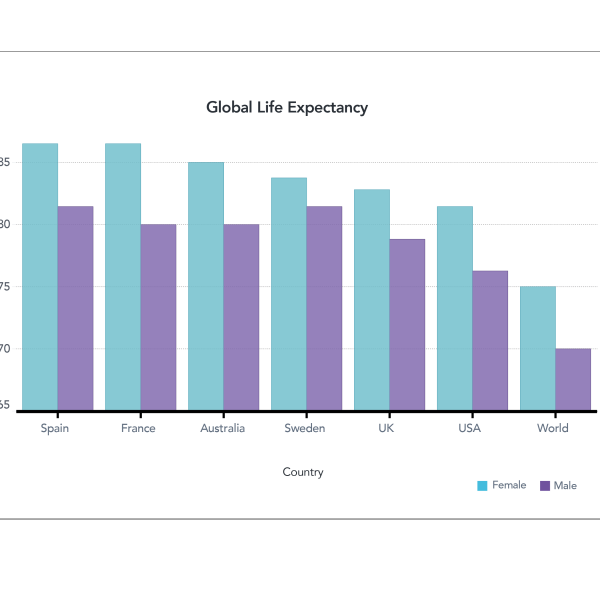
Editor's note: This blog post is the first in a series of posts, originally published here by our partner News Literacy Project, exploring the role of data in understanding our world. Charts and graphs are useful tools for communicating complex information. They allow consumers to see — rather than read or calculate — differences

SAS has always believed in the power of education, but in today’s data-driven economy, it’s more important than ever to ensure our students are introduced to data science at an early age. We as a company are focusing our resources on creating student experiences in data literacy, computer science and

Who Helps the World? Girls! Decades of research show there's one strong difference in what young men and women say they value in a future career: The opportunity to help others. And young women are far more likely to say that they want a job where they can have a positive
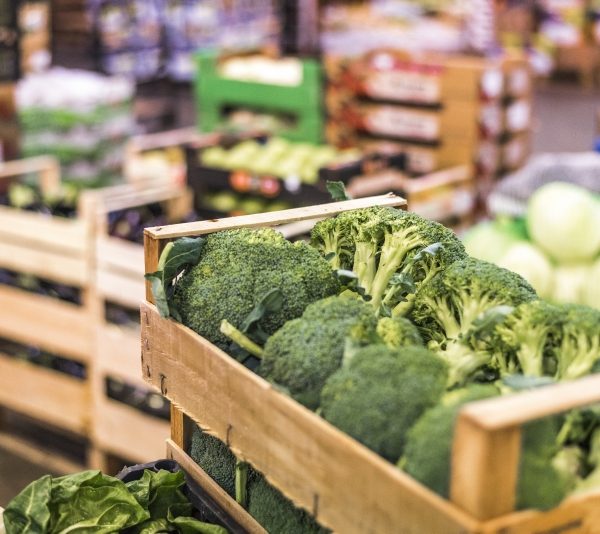
Two billion people worldwide experience food insecurity and 14% of food produced for humans to consume is wasted before it arrives at the wholesaler, according to the Food and Agriculture Organization of the United Nations (FAO). The FAO celebrates World Food Day on October 16, 2020. This year’s event focuses
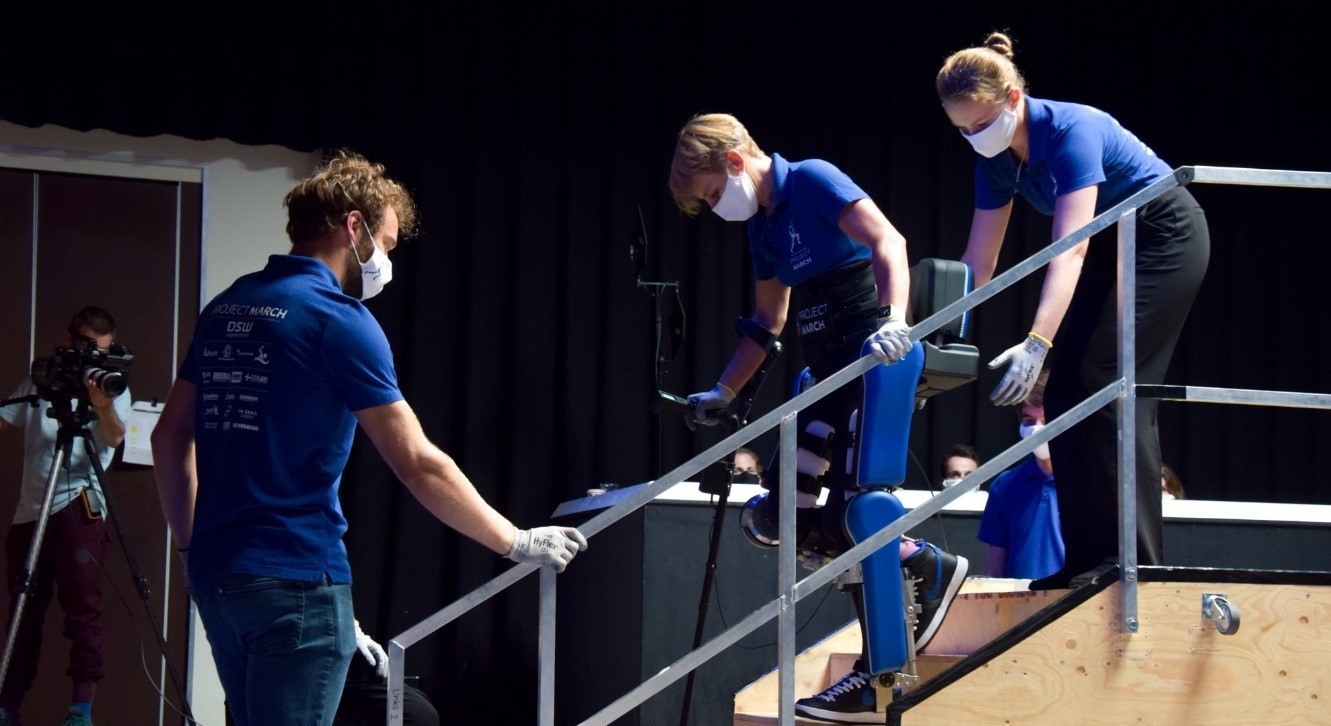
In the future this kind of data analysis can help to make an even better exoskeleton!
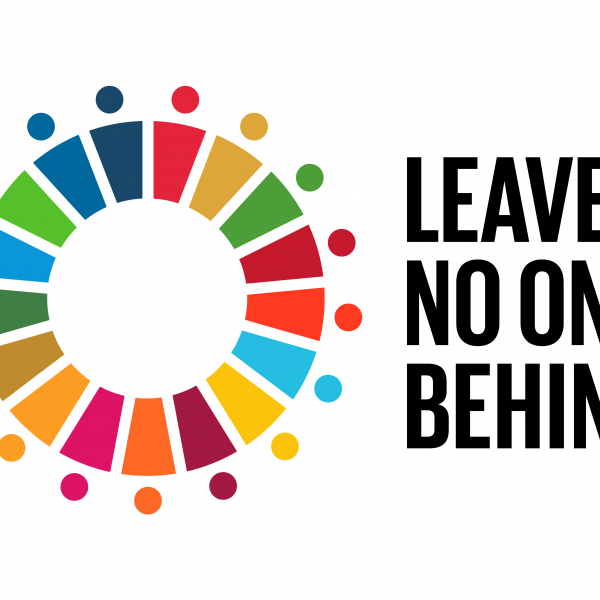
Five years ago, 193 countries joined forces and formed the United Nation’s Sustainable Development Goals. These goals, which are commonly referred to as the Global Goals, serve as a universal promise—an ambitious pledge to build a better future for people and planet by 2030. This year marks the final 10-year

SAS Japanでは”Data for Good”を目指す学生コミュニティ「SAS Japan Student Data for Good community」を運営しています。このコミュニティは、Data For Goodを題材にデータサイエンスの一連の流れを体験する場として設立されました。今回紹介する勉強会も、その活動の一環です。詳しくは「Data for Goodを通じて"本物の"データサイエンティストになろう!」の記事をご覧ください。活動の様子についてはFacebookにて共有していますので、そちらもご参考にしてください。 五回目の勉強会では海洋汚染をテーマに、Data for Goodの活用事例から課題設定の部分を学びました。また、今回は初めてオンラインでの開催をしましたので、その様子もお伝えしたいと思います。 海洋保護に向けたD4Gの取り組み/マイクロプラスチック問題 SDGsの一つに“海の豊かさを守ろう(LIFE BELOW WATER)”という項目があります。日本でも2020年7月からスーパーやコンビニエンスストアにてレジ袋の有料化が始まりました。その背景の一つにはマイクロプラスチック問題があります。コミュニティのメンバーがこのテーマでData for Goodに取り組んでいるので、今回はその活動について共有しました。 マイクロプラスチック問題とは、特に海洋環境において微小なプラスチック粒子が海洋生物に対し悪影響を及ぼしてしまうことです。また生物濃縮により海洋生物だけでなく、人間にも間接的に影響があります。レジ袋の有料化や製品へのスクラブ等使用の規制の動きが世界的に進んでいます。環境保全にいち早く取り組んでいる海外の先進諸国のデータをもとに、今後日本にも導入するべき取り組み、推進していくべき取り組みを明確にしようというのが今回の活動目的になります。 今回の勉強会の活動紹介では、この問題の現状と最新の研究、既に行われている取り組みの効果検証について取り上げました。意思決定の場に置いて、ある施策が目的とするものに対して効果があるのかどうかは非常に重要です。特にマイクロプラスチック問題のように規模が大きい問題に対してはその効果の大きさだけでなく、費用対効果にも注目しなければなりません。しかし、効果の推定には比較実験が必要になりますが多くの場合それは存在しないため、自然実験という考え方を用いてアプローチしていきます。 詳細については今後このブログの中でご紹介していきます。 海洋プラスチック汚染問題をデータで解決する 今回は、コミュニティーメンバーがテーマとして活動している「海洋汚染」に関連して、オランダに拠点を置く非営利のエンジニアリング環境団体 The Ocean Cleanupの事例を紹介しました。 The Ocean Cleanupは、太平洋で無人のゴミ回収装置であるクリーンアップシステムを開発しています。その運用においてある課題が浮かび上がりました。太平洋には多くのプラスチックが集まっているとされる「太平洋ゴミベルト」と呼ばれるエリアがありますが、その範囲は非常に広大かつ陸地から遙か遠くにあります。システムを運用する費用を考慮して、効率的にゴミを回収するにはどうすればよいでしょうか。この課題に対して、The Ocean Cleanupではビッグデータを用いて太平洋ゴミベルトの可視化を行いました。 調査団はこれまでの海洋研究の知見とともに、独自に大規模な調査を行いました。太平洋ゴミベルトのサイズ・位置・プラスチックの量・プラスチックの分布と4つの可視化の観点などから進められてきました。 プラスチック汚染は複雑で大規模な問題であるため、包括的で大掛かりな解決策が必要となります。そのため、データサイエンスの活用によって、問題を理解し効率よく解決するための知見が得られます。クリーンアップシステムでは、監視カメラや衛星との交信による位置情報から実際のシステムの動きや回収度を確かめることができます。ビックデータによる分析結果だけでなく、実際のパフォーマンスデータから得られた知見からより良いシステムの構築が現在も行われ続けています。 以上の話を踏まえて、最後に参加者同士でディスカッションを行いました。自分たちの生活と繋げて考えたり、事例の中で興味深かった点についてお互いに話すことが出来ました。また、海洋保護をテーマに今後活動していく上で考えるべき点についても触れながら議論を進められ、有意義な時間になりました。 今回は初めてのオンライン開催でしたが、オンラインであることの良さを活かして定期的に勉強会を企画するとともに、次回から更に質の高い勉強会をつくっていきたいと思います! コミュニティメンバー募集中! SAS Japan Student Data for Good
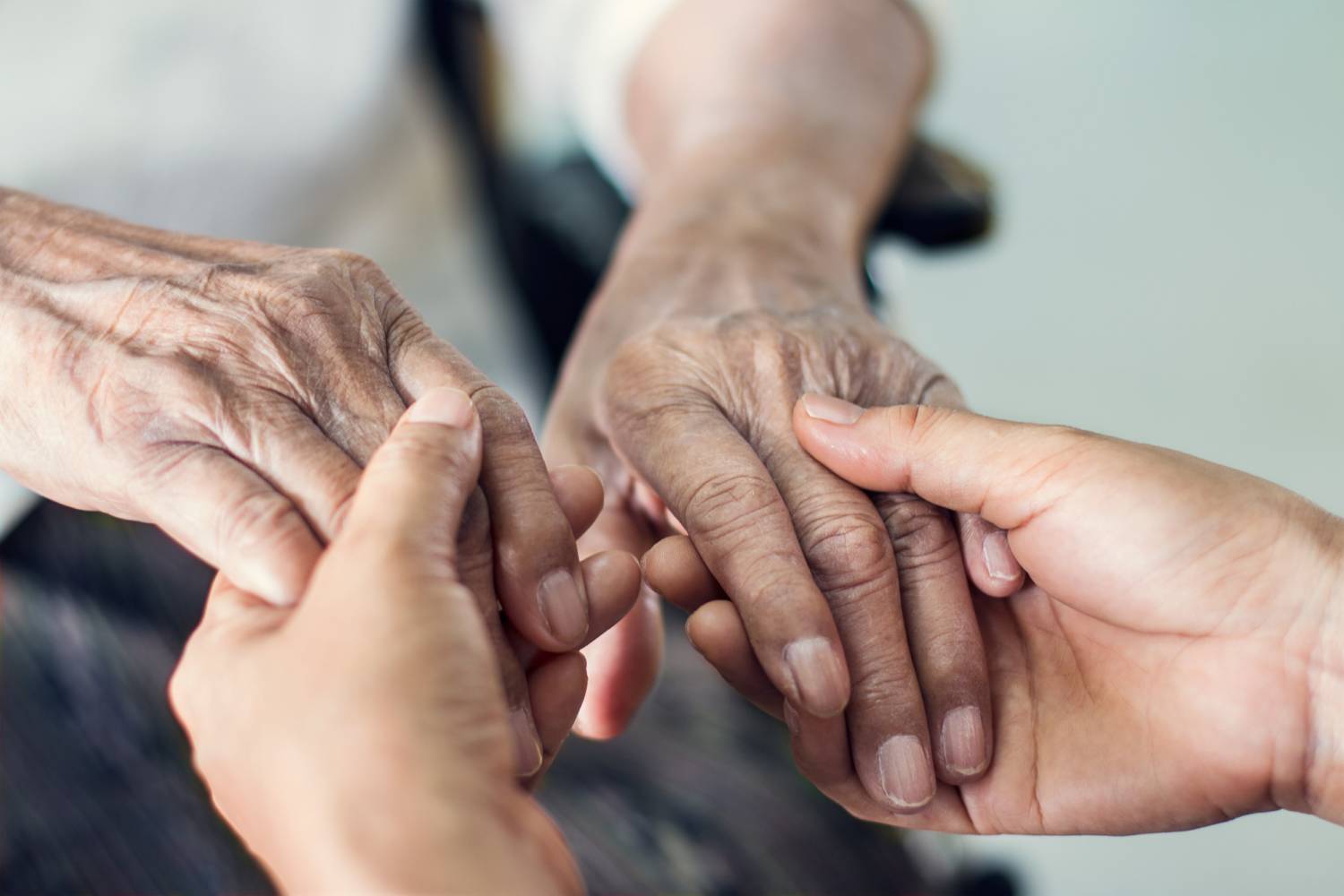
Getting people with mental health conditions the help they need is a top priority for many Californians, according to a recent California Health Care Foundation report. In 2004, Golden State voters approved the Mental Health Services Act (MHSA). Enacted into law in January 2005, MHSA has generated approximately $15 billion
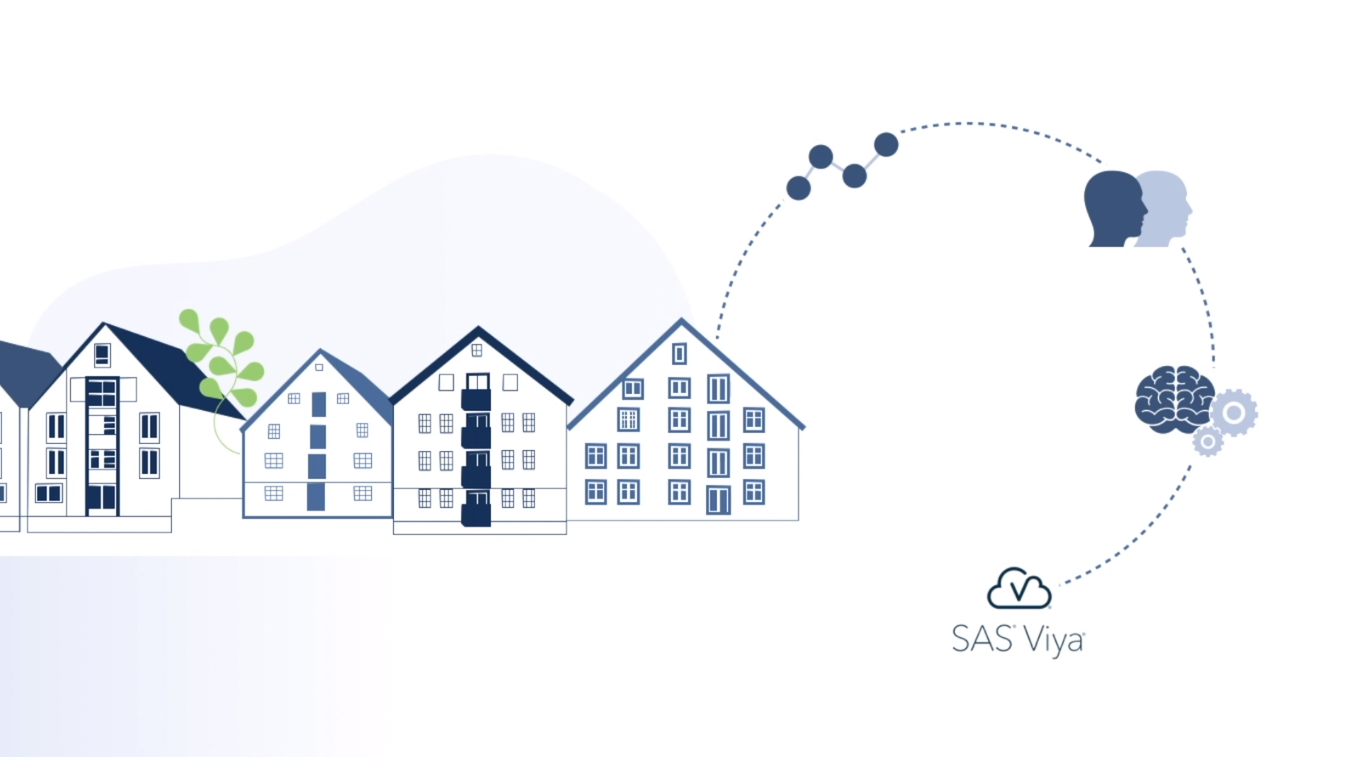
최근 SAS는 클라우드에서 AI와 분석의 미래를 더욱 구체화하기 위해 마이크로소프트와 새로운 전략적 파트너십을 체결했습니다. 이번 파트너십으로 SAS 고객은 클라우드 환경에서 훨씬 수월하게 분석을 수행할 수 있습니다. 또한 SAS의 AI 및 분석 솔루션과 마이크로소프트 애저(Azure)의 긴밀한 통합으로 수백만 명의 애저 고객은 SAS 기술을 편리하게 활용하여 분석 성능을 한층 개선할 수 있습니다.

[Nabaruna Karmakar was coauthor of this post] A study was conducted at the University of Denver on The Economic Impacts of the Austin, Texas "No Kill" Resolution. The study found great value in creating an animal welfare-focused community. It highlighted the benefits of economic growth due to an increased need in